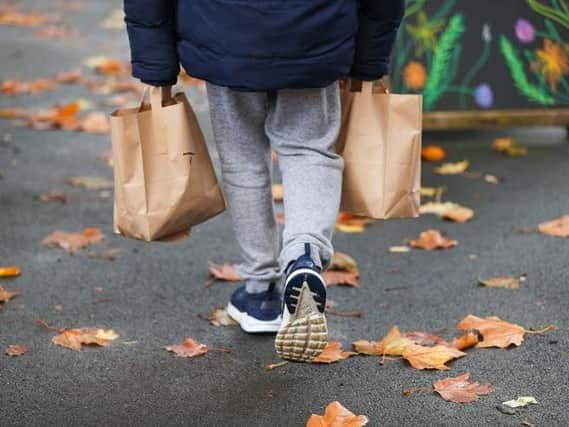Around one in five Lincolnshire pupils on free school meals


The Association of School and College Leaders said the coronavirus crisis had worsened child poverty across England, and called on the Government to make solving it a top priority.
Department for Education figures show 21,895 children in Lincolnshire were eligible for free school meals in January – 20 percent of all state school pupils in the area.
Advertisement
Hide AdAdvertisement
Hide AdThis was up from 16 percent the year before, and at the highest level since comparable figures began in 2015-16.
In Lincolnshire, 5,199 children became eligible between March 23 2020 – when the first national lockdown began – and January, though the DfE said some may have been previously eligible at other times.
Of the children, 3,824 went to primary schools, 1,233 to secondary schools and 122 to special schools. There were also 12 newly eligible pupils at nurseries and eight in pupil referral units.
Across England, 1.74 million pupils (21 percent) were eligible for free school meals in January, up from 1.44 million in the same month in 2020.
Advertisement
Hide AdAdvertisement
Hide AdAround 427,000 pupils had a free school meal eligibility start date after the first lockdown – compared to 292,000 for the same period a year previously.
Children are entitled to free school meals if their parent or carer is on benefits, including income support or receiving Universal Credit, with a household income of less than £7,400 a year.
The ASCL said the increase in free school meal eligibility illustrates the financial impact of the pandemic on families.
Geoff Barton, general secretary of the organisation, said: “Child poverty was already a terrible blight on our society prior to coronavirus.
Advertisement
Hide AdAdvertisement
Hide Ad"The situation is now even worse, and tackling this issue simply has to be a top priority for the Government.”
The DfE figures also show how free school meal coverage compares in the 262 state schools in Lincolnshire with at least 100 pupils.
St George's Church of England Community Primary School, Gainsborough – which is a mixed sex primary school in Gainsborough East – had the highest proportion in the area, with 70 percent of pupils eligible.
At the other end of the scale, was Kesteven and Grantham Girls' School, with just 3.5 percent of the children at the girls' secondary school in Grantham St Vincent's receiving free school meals.
Advertisement
Hide AdAdvertisement
Hide AdThe school leaders' union NAHT said the Government can no longer ignore the evidence of the rise in the number of children getting free school meals.
Paul Whiteman, general secretary of NAHT, said: "This is real money, affecting real children’s lives.
“If the Government doesn’t take action, they will be abandoning those children most in need at the most critical time.”
The Department for Education said it was providing a £14 billion increase in school funding over three years.
A spokeswoman added: "School leaders can target our ambitious recovery funding, worth £3 billion in total, to further support disadvantaged pupils with their attainment.”